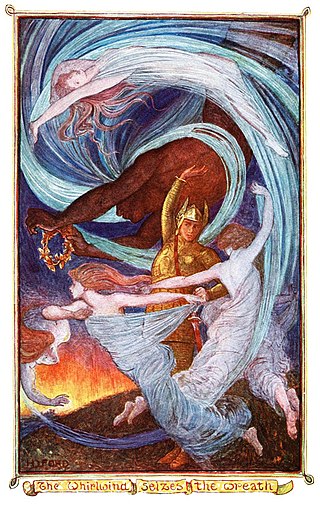The Aarne–Thompson–Uther Index is a catalogue of folktale types used in folklore studies. The ATU Index is the product of a series of revisions and expansions by an international group of scholars: originally composed in German by Finnish folklorist Antti Aarne (1910), the index was translated into English, revised, and expanded by American folklorist Stith Thompson, and later further revised and expanded by German folklorist Hans-Jörg Uther (2004). The ATU Index, along with Thompson's Motif-Index of Folk-Literature (1932) – with which it is used in tandem, is an essential tool for folklorists.
"Cap-o'-Rushes" is an English fairy tale published by Joseph Jacobs in English Fairy Tales.
Tatterhood is a Norwegian fairy tale collected by Peter Christen Asbjørnsen and Jørgen Moe.

"Maid Maleen" is a German fairy tale collected by the Brothers Grimm, number 198.
Gold-Tree and Silver-Tree is a Scottish fairy tale collected by Joseph Jacobs in his Celtic Fairy Tales. It is Aarne-Thompson type 709, Snow White. Others of this type include Bella Venezia, Nourie Hadig, La petite Toute-Belle and Myrsina.
How the Dragon was Tricked is a Greek fairy tale collected by Johann Georg von Hahn in Griechische und Albanesische Märchen with the title Von dem Schönen und vom Drakos, and sourced from Kukuli. Andrew Lang included it in The Pink Fairy Book. It is Aarne-Thompson type 328, the boy steals the giant's treasures.

The Lute Player, The Tsaritsa Harpist or The Tsaritsa who Played the Gusli, is a Russian fairy tale. It was published by Alexander Afanasyev in his collection Russian Fairy Tales, as number 338. Andrew Lang included it in The Violet Fairy Book (1901).
The Daughter of Buk Ettemsuch is a fairy tale from northern Africa, collected by Hans Stumme in Märchen und Gedichte aus der Stadt Tripolis. Andrew Lang included it in The Grey Fairy Book (1900).
Asmund and Signy is an Icelandic fairy tale published by Scandinavist Josef Calasanz Poestion in Islandische Märchen. Andrew Lang included it in The Brown Fairy Book.
The Little Bull-Calf is an English Romani fairy tale collected by Joseph Jacobs in More English Fairy Tales.
The Blue Belt is a Norwegian fairy tale collected by Peter Christen Asbjørnsen and Jørgen Moe in Norske Folkeeventyr. It is Aarne-Thompson type 590.
"Mossycoat" is a fairy tale published by Katherine M. Briggs and Ruth Tongue in Folktales of England. It appears in A Book of British Fairy Tales by Alan Garner. The story known by folklorists was collected by researcher T. W. Thompson from teller Taimi Boswell, a Romani, at Oswaldtwistle, Lancashire, January 9, 1915.
The Bay-Tree Maiden is a Romanian fairy tale about a fairy or maiden that comes out of a tree or plant and falls in love with a human prince.
The Golden Stag is a Romanian fairy tale.
The Princess in the Suit of Leather is an Egyptian folktale. It may also be referred to as The Princess in the Leather Burqa. This story was originally published in translation in Inea Bushnaq's 1986 collection Arab Folktales. Author Angela Carter included it in The Old Wives’ Fairy Tale Book.
The Calumniated Wife is a motif in traditional narratives, numbered K2110.1 in Stith Thompson's Motif-Index of Folk-Literature. It entails a wife being falsely accused of, and often punished for, some crime or sin. This motif is at the centre of a number of traditional plots, being associated with tale-types 705–712 in the Aarne–Thompson–Uther Index of tale-types.

"The Fairy Aurora" is a fairy tale written by Ioan Slavici and published in June 1872. Mihai Eminescu urged him to write his first story, which was read at Junimea in two sessions and was published in the magazine Convorbiri Literare.

King Lindworm or Prince Lindworm is a Danish fairy tale published in the 19th century by Danish folklorist Svend Grundtvig.
In folkloristics, "The Animal as Bridegroom" refers to a group of folk and fairy tales about a human woman marrying or being betrothed to an animal. The animal is revealed to be a human prince in disguise or under a curse. Most of these tales are grouped in the international system of Aarne-Thompson-Uther Index under type ATU 425, "The Search for the Lost Husband". Some subtypes exist in the international classification as independent stories, but they sometimes don't adhere to a fixed typing.
Povestea cu măr moramăr și păsărica a ciută is a Romanian fairy tale published as part of the collection ''Povești nemuritoare''.




